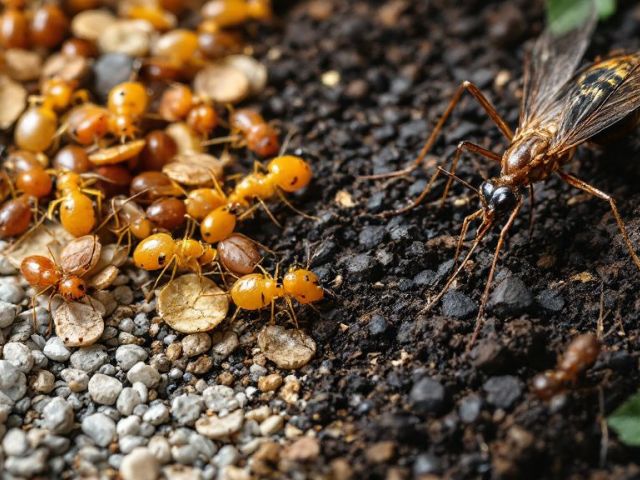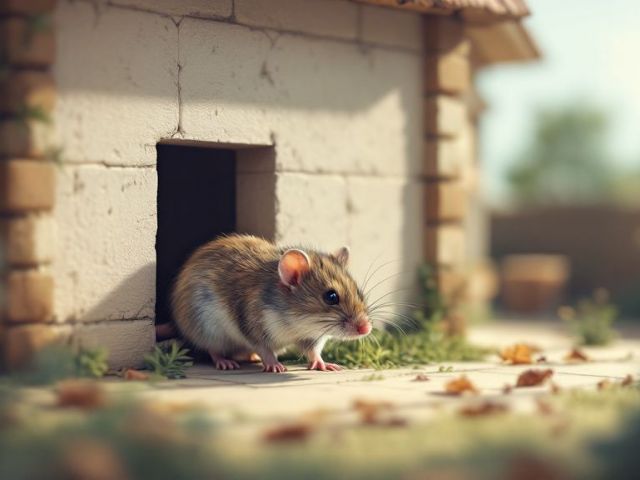Signs You Might Have a Mouse Problem in Your Home
Key Takeaways
– Mice leave droppings and gnaw marks which are key indicators of their presence.
– Unusual nighttime noises may signal intruding mice in the house.
– Sealing entry points and securing food helps prevent infestations.
– Setting traps and maintaining cleanliness are crucial for mice control.
– Combining trapping with preventative strategies forms an effective defense.
Discovering whether mice have infiltrated your living space can be a matter of recognizing tell-tale indicators. One of the most common signs of mice in the house is the presence of droppings, often resembling small, dark grains. You might also notice gnawed materials, as mice tend to chew on packaging, wires, and even furniture to control their rapidly growing teeth. Unexplained scratches or squeaking noises, particularly at night, can also alert you to a possible mouse presence. Additionally, nests made from shredded paper or fabric tucked away in obscure corners can signal a breeding ground. The faint, musky odor pervading certain areas might be another clue, pointing toward hidden nests or trails frequently traveled by these unwelcome guests. Seeing these signs of mice infestation prompts swift action to manage the situation effectively. Understanding how to know if you have mice ensures prompt engagement with mice and rodent control methods, preventing further intrusion and potential health risks.

Understanding Mouse Behavior
One of the challenges in dealing with a mouse problem is understanding how these creatures navigate and survive in human homes. Mice are nocturnal animals, which means they’re most active at night, quietly foraging for food. They can squeeze through remarkably small openings due to their flexible ribs, making any tiny crevice a potential entry point. Often, they create nests in secluded areas, using soft materials they find around the house. This elusive behavior can make it difficult to detect their presence, leading to confusion about how to tell if you actually have mice. Mice tend to follow established paths, leaving greasy marks along baseboards and walls due to the oils in their fur.
This issue can be addressed through a keen understanding of their behavior and implementing strategic mice and rodent control measures. Identifying their common pathways and entry points is crucial, and sealing off these access points can prevent further infestation. Utilizing traps and bait stations along these routes can help you effectively manage the situation. Prompt removal of food sources, such as crumbs and unsecured food packaging, is another critical step. By focusing on these behaviors and adjusting your surroundings, you increase your chances of managing and eliminating mice in the house and spotting the signs of a mice infestation before it becomes a larger problem.
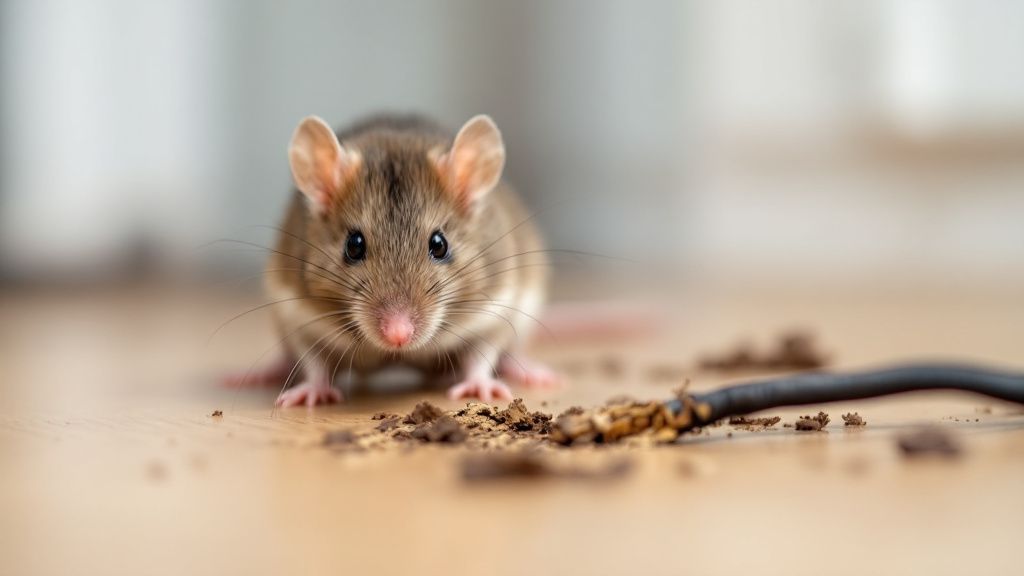
Physical Signs of Mice
Observing physical signs is fundamental in determining if mice are occupying your space. Droppings are a prevalent indicator, appearing like small, dark pellets scattered in areas where food is stored or consumed. You might also spot signs of gnawing, as mice chew on furniture, wiring, or stored items to maintain their incisor length.
Another crucial clue is the presence of grease marks along frequently traveled paths. As mice move along walls, the oil from their fur leaves smudge-like streaks, particularly near their entry-exit routes. Nesting materials, like shredded paper or fabric, may be visible as well, often tucked away in hidden corners of the house.
Look out for unexplained noises echoing through the night, such as scratching or squeaking, which often signifies a mouse problem. By paying attention to these physical signs, you gain a clearer picture of whether these rodents have taken up residence in your home. Looking ahead, advancements in technology might make it easier to detect and address these signs more efficiently, streamlining the process of mice and rodent control. This evolution indicates a future where managing a potential infestation becomes more seamless and preventive measures more sophisticated.

Auditory Signs of Mice
Hearing strange sounds in the quiet of the night can be an unsettling hint that mice might have infiltrated your living space. These nocturnal creatures are most active when your home is at its quietest, producing subtle noises that echo through walls. You may hear gentle scurrying in attics or between walls, as mice navigate their pathways in search of food and shelter.
The sound of gnawing is another auditory sign that should prompt further investigation. Mice have a need to constantly chew to keep their teeth at a manageable length, resulting in a distinct, rhythmic crunching noise. This can be especially noticeable if they’ve found their way into spaces near electrical wiring or stored items.
What most people don’t realize about mice is the extent of communication that occurs through their high-pitched squeaks, often imperceptible to human ears. These vocalizations are a vital part of their social interactions and territorial behaviors. Understanding these auditory signs of mice can guide you in identifying how to know if you have mice and implementing effective mice and rodent control strategies. Recognizing the subtle details behind these noises can make all the difference in managing a mice infestation before it grows unmanageable.
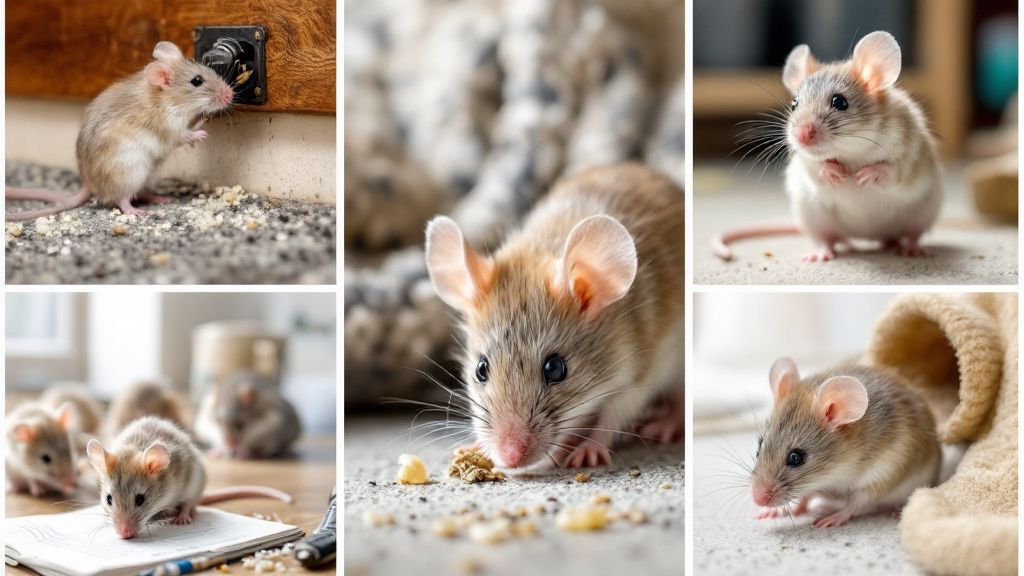
Visual Signs of Mice
Spotting mice in your home is often easier when you recognize the visual signs they leave behind. One such sign is the presence of small, dark droppings often found along walls, in cabinets, or near food sources. These pellets are typically about the size of a grain of rice and can accumulate quickly when mice are active.
Classic indicators of a mouse infestation also include gnawed surfaces. Both furniture and wires can show signs of chewing, where mice work on maintaining their ever-growing teeth. Look carefully for shredded materials, like paper or insulation, which they use to build their nests. This can often be found in hidden crannies or less-frequented areas like basements or attics.
To enhance your detection of visual signs of mice, try using a flashlight to shine into corners and dimly lit areas where evidence might be overlooked. This practical tip can help you identify nests or droppings that aren’t immediately apparent. Being vigilant in noticing these subtle visual cues is essential in promptly executing mice and rodent control measures and understanding how to tell if you have mice effectively. Recognizing these signs helps you assess and manage the situation before the infestation becomes more challenging to control.
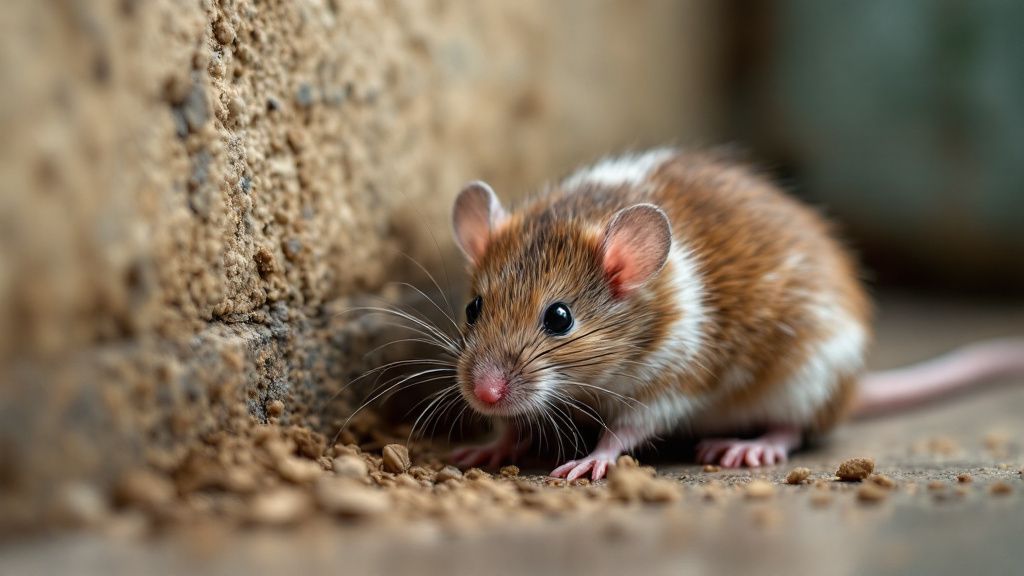
Preventative Measures to Avoid Mice
Implementing preventative measures is crucial in keeping mice out of your home. One effective strategy is to seal potential entry points. Mice can squeeze through openings as small as a dime, so inspect your home for gaps in walls, around doors, and utility pipes. Weather stripping can be applied to seal cracks, and steel wool can be used as a deterrent where feasible.
Maintaining a clean environment is fundamental in deterrence. Mice are drawn to food sources, so ensure food is stored in airtight containers and clean up crumbs promptly. Regularly dispose of garbage and use trash cans with tight-fitting lids. Keeping clutter to a minimum reduces hiding spots and obstructs pathways mice might use to navigate through your house.
According to recent studies, odors can play a significant role in repelling rodents. Using natural deterrents such as peppermint oil has shown effectiveness in deterring mice. This scientific finding explains how integrating such strategies can form an invisible barrier, making your home less appealing for rodents. By combining these preventative measures, you enhance your ability to prevent a mice infestation and maintain control over your living space, ensuring peace of mind and comfort.

What to Do If You Have Mice
Taking immediate action is essential if you find yourself with mice in your home. Begin by setting traps in high-traffic areas where signs of mice infestation have been observed, such as along walls or near entry points. Choose from snap traps, glue traps, or humane options, depending on personal preference and safety considerations for children and pets.
Sanitation is a vital step in mouse management. Remove accessible food and water sources, ensuring all edibles are stored in secure containers. Regularly clean kitchen surfaces, vacuum floors, and dispose of waste promptly to prevent mice from finding sustenance in your home. This reduces their incentive to stay and curtails breeding conditions.
Looking at mice and rodent control through the lens of integrated pest management (IPM), we can see that combining multiple strategies leads to more effective control. This unique perspective emphasizes long-term prevention, including habitat modification, exclusion techniques, and controlling population levels, offering a comprehensive method to tackle the issue at its core. By adopting a varied approach, you not only manage an immediate problem but also fortify your home against future occurrences, ensuring a healthier living environment.
Frequently Asked Questions
How do I know if I have mice in my home?
Look for droppings, gnaw marks, and nests in hidden areas, as well as unusual noises at night.
What attracts mice to a house?
Mice are drawn to food sources, warmth, and shelter.
Can mice enter through small openings?
Yes, mice can squeeze through gaps as small as a dime-sized hole.
What is an effective way to control mice?
Use trapping along with preventive measures like sealing entry points and securing food to control mice effectively.
Are there natural methods to repel mice?
Yes, natural deterrents such as peppermint oil can be used to repel mice.
